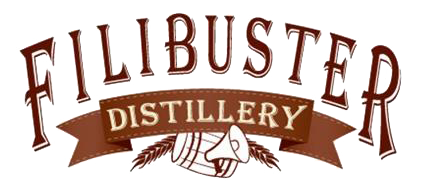It seems everywhere you look these days, you will find a bourbon distillery. Even with the rise of rye and the creation of new categories such as American Single Malt, bourbon continues to grow–as well it should, holding its place as the quintessential American whiskey.
But the key point is that bourbon is everywhere.
The Shenandoah Valley’s Filibuster Distillery was founded in Mauerton, Virginia in 2013, with its own distillation beginning in 2016. The distillery is the passion project of Siddharth Dilawri, a first generation immigrant from India, who was working in IT and in his father’s liquor store in Washington, DC prior to opening the distillery.
Emphasis on that specificity of place is an important facet when examining Filibuster, for the distillery focuses heavily on its unique where in the world of bourbon being everywhere. One of the first things I noticed upon inspecting the bottles I received for review–Filibuster’s Bottled-in-Bond and one of its Single Estate Single Barrel Bourbons–was the detailed grain and water sourcing. I immediately likened them to Mark Reynier’s Waterford experiments. Terroir in whiskey is still a controversial topic, with both proponents and detractors alike. I, for one, subscribe to it, but I came into the whiskey universe from the wine world, in which terroir is paramount.
Filibuster’s labeling notes show its belief in the terroir of bourbon. If that were not enough, the distillery’s website proudly proclaims that the Bottled-in-Bond “is crafted using the finest Shenandoah Valley grains and water which represents Virginia in a bottle”–in other words, everything short of using the word “terroir” itself.
Now that is all well and good, but what about the whiskey?


I started by tasting the Bottled-in-Bond, due to its lower ABV, 50% vs. this particular Single Estate Single Barrel’s 58.05%. The Bottled-in-Bond is aged five years and features a mash bill of 70% corn, 20% rye, and 10% malted barley sourced from HWK Farms and water from Virginia limestone. It is double-distilled with a fermentation of 72 hours. Batch number is 2022-001, which places this bottle in the bourbon’s initial release, of which there were only twelve barrels.
The color is a deep apple-juice orange amber. On the nose I got a melange of fresh baked cinnamon apples, orange zest, cognac, and apricots. The palate begins with peaches & cream, caramel, cinnamon, and spice, definitely delivering on that rye influence. Mid palate I caught some alcohol heat which then dissipates again into a long caramel-centric finish ending eventually in char. The addition of a little water accented peach, apricot, and spice notes while diminishing the spice and heat. I found this to be a lovely, balanced, and complex bourbon.
Rating: 4 out of 5 stars.


Then I moved on to the Single Estate Single Barrel bourbon, in this case the Shenandoah Mathias estate, Barrel No. W/R/1/363. Similar to the Bottled-in-Bond, the water is sourced from Virginia limestone and was fermented for 72 hours. This is a wheated bourbon, aged four years; the full mash bill includes corn, rye, barley, and wheat.
Color on the Single Estate is a deep amber, while the nose sports a pleasing mixture of cherry cordial and dark chocolate. The palate starts with chocolate orange, then transitions to bread notes (a pronounced wheat influence), then ending with a long lavender and caramel finish. This is a dangerously smooth dram, belying the bottle’s near 120 proof. Unfortunately the addition of water detracts from the overall experience, raising the bready elements while all but eliminating the otherwise strong finish. As someone who is not married to the addition of water, instead letting each individual bottle dictate how much, if any, I will add, all this means is that in the future I will be drinking it neat.
Overall, I thought this bottle to be somewhat less complex than the Bottled-in-Bond, but still a very enjoyable dram.
Rating: 3.75 out of 5 stars.
Final Notes: I generally prefer spicy to sweet bourbons, so both of these landed right in my sweet spot (see what I did there?), providing an exciting introduction to Filibuster’s bottlings. I would love to try some of the other Single Estate Single Barrel bourbons to compare and contrast the distillery’s various terroir expressions. In my opinion, Filibuster is succeeding in its goal of representing Virginia in a bottle.
Key Points:
Bottled in Bond
ABV: 50%
Age: 5 years
Mash bill: corn, rye, barley
Color: deep apple-juice orange amber
Nose: fresh baked cinnamon apples, orange zest, cognac, and apricots
Palate: peaches & cream, caramel, cinnamon, and spice; mid palate light alcohol heat; long caramel-centric finish ending in char
Rating: 4/5
Single Estate Single Barrel (Shenandoah Mathias, W/R/1/363)
ABV: 58.05%
Age: 4 years
Mash bill: corn, rye, barley, wheat
Color: deep amber
Nose: cherry cordial and dark chocolate
Palate: chocolate orange; mid-palate bread; long lavender and caramel finish
Rating: 3.75/5




